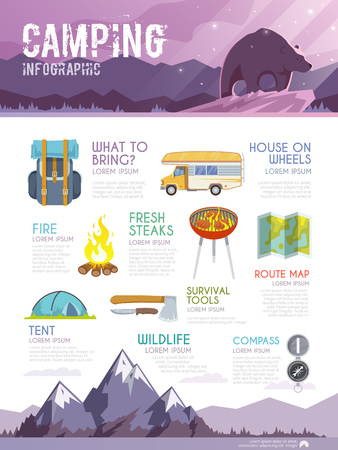How To Increase Online Camping Tents Product Sales And Overall Revenue
How To Increase Online Camping Tents Product Sales And Overall Revenue
Blog Article
Taking Photos of the Night Sky
A range of elements can impact evening skies photography. From weather conditions to upcoming celestial events, you'll wish to prepare ahead to ensure success.
What's the difference between campsite and tent site?
The shutter speed you choose determines whether stars look like precise pin-points or route throughout the picture. A great guideline is to limit the exposure to 500 secs, or the matching of your lens's focal length.
Location
One of one of the most vital consider a great photo is where you take it. Aim for locations with marginal light air pollution, and prevent locations that have brilliant city lights and high-rise buildings.
Also, search for an area that uses foreground aspects to produce compositions with. For example, dune patterns, wind-sculpted ridges and rough outcrops can all supply appealing foreground aspects to help inform the tale of your evening sky photograph.
It is also handy to study huge events such as meteor showers and lunar eclipses to make the most of possibilities for wonderful pictures. Utilizing a tool such as the Photographer's Ephemeris can be unbelievably beneficial when preparing your shoots. It assists you to determine moon stages, Galaxy position and other expensive events. Also, take into consideration capturing in RAW style instead of JPEG as this offers you a lot more flexibility when processing the photos. This is particularly true if you intend to print your photos.
Electronic camera Setups
Getting the appropriate cam settings is important for any kind of photo, but specifically so for night sky pictures. A wide-angle lens is best for capturing even more of the Milky Way and reducing celebrity tracks, as well as a much longer shutter speed to quit the motion of stars and disclose their details.
For an optimum level of clarity, shoot in RAW layout instead of JPEG, which permits you to protect more information and offers adaptability during post-processing. This can also contribute to file dimension, so ensure you have a lot of storage area and extra flash memory card available.
Establish your focus to hand-operated focusing by turning the AF/MF turn on your lens into MF mode. You might need to take a couple of examination shots and check the picture playback on your camera's LCD display until you accomplish perfect, identify hand-operated focus. It's an excellent idea to do this throughout the day with your selected lens and the area you will be contending night, to confirm the accuracy of your emphasis setting.
Illumination
A good night skies picture calls for the best problems. This includes a dark skies, yet likewise an intriguing foreground element such as a hill on the tent sales horizon, a lake to mirror the stars, or a human aspect like a barn or shed. You can also utilize a headlamp to brighten the foreground and add some drama or deepness to your image.
The most vital camera setups for evening sky digital photography are the aperture and shutter rate. The larger the aperture, the extra light that reaches the sensor. This permits you to capture brilliant celebrities in a relatively brief amount of time.
The shutter speed identifies whether your celebrities will be pin-point best or if they will certainly appear as star routes due to the Earth's turning. Make certain to take several lengthy direct exposure shots and stack them in post-processing for the best results. Last but not least, shoot in RAW mode to provide on your own maximum latitude in post-processing.
Structure
The key to beautiful star shots isn't a premium telescope, a brand-new wide-angle lens or a top-of-the-line Canon or Nikon cam. It's strategy, planning and structure.
For beginners, scout your shoot place in advance to obtain a feel for the layout and prospective structures. Take into consideration incorporating foreground aspects such as rocks, a lake or alpenglow on the landscape to include personality and interest to your pictures.
Keep in mind the Regulation of Thirds when composing your photos. This straightforward principle helps equilibrium and combine images. It's likewise useful for concentrating on points of interest in your picture, such as rock attributes or the Galaxy. Also, remember to plan your shoots around moon phases-- shooting at a moon can subdue celebrities and develop a silhouetted form, while shooting on nights with a new moon can assist you see constellations a lot more plainly.
How do you keep a tent floor clean?
